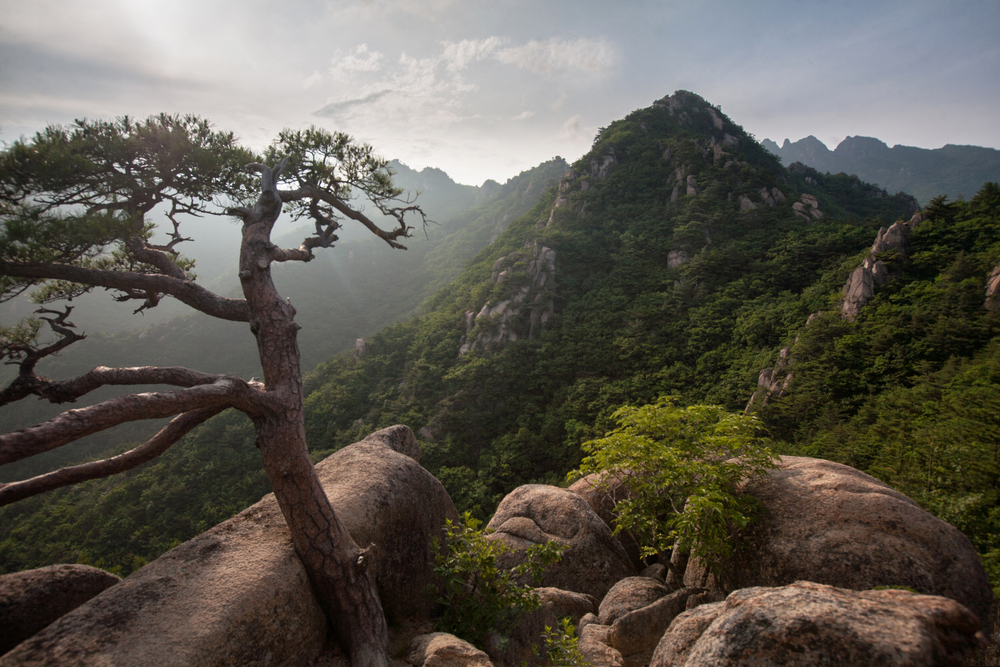Gayasan Overview
Gayasan National Park (가야산국립공원), located in South Korea, is a stunning natural haven that spans an area of 123 square kilometers (47.5 square miles). Established in 1972, it is nestled in the Sobaek Mountain Range, primarily in Gyeongsangnam-do and Gyeongsangbuk-do provinces. The park is named after its centerpiece, Mount Gayasan, which rises to an elevation of 1,430 meters (4,690 feet) and is revered for its cultural and natural significance. The name “Gayasan” reflects its Korean roots, meaning “Gaya Mountain,” a nod to the ancient Gaya Confederacy that once thrived in this region.
The park’s landscape is a striking blend of rugged peaks, serene valleys, and lush forested terrain. Mount Gayasan itself is the crown jewel, with its jagged ridges and panoramic views. Among its many scenic highlights, Hongnyudong Valley is renowned for its crystal-clear streams, dramatic rock formations, and seasonal beauty. During autumn, the park transforms into a canvas of fiery reds, oranges, and yellows as deciduous trees dominate its vegetation. In spring, cherry blossoms and azaleas adorn the trails, adding bursts of color to the verdant surroundings.
Wildlife enthusiasts will be delighted by the biodiversity within Gayasan National Park. The park provides a sanctuary for various animal species, including Asiatic black bears, wild boars, and roe deer. Birdwatchers can spot a variety of avian species, such as woodpeckers, magpies, and the rare black woodpecker. The park’s flora is equally diverse, featuring a mix of broadleaf and coniferous trees, ferns, and wildflowers that support its vibrant ecosystem.
Gayasan is not only a natural treasure but also a cultural one, as it is home to the historic Haeinsa Temple, a UNESCO World Heritage Site. This Buddhist temple, dating back to the 9th century, houses the Tripitaka Koreana, an exquisite collection of over 81,000 wooden printing blocks that represent one of the most complete Buddhist scriptures in the world. The temple’s tranquil atmosphere and spiritual significance attract visitors year-round.
Visitors to Gayasan National Park can engage with its beauty in various ways. Hiking is the most popular activity, with trails ranging from gentle paths through valleys to challenging ascents to mountain peaks. Photography enthusiasts often flock to the park to capture its dramatic landscapes and changing seasons. Camping and picnicking are also common, allowing visitors to immerse themselves in the park’s serenity.
Conservation efforts at Gayasan have been a significant success, with the park being well-managed to balance ecological preservation and tourism. Threats such as habitat loss and climate change are addressed through sustainable practices and active community involvement. The preservation of Haeinsa Temple and the surrounding environment reflects a harmonious coexistence of culture and nature.










































































